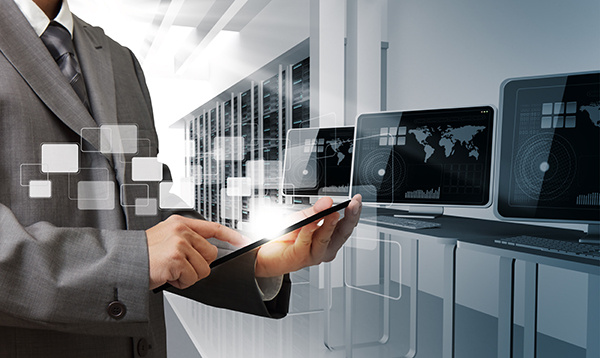5G, Internet of Things and Artificial Intelligence: Art and Technology Work in 2021

We are witnessing tremendous changes in the field of technology, the integration of 5G, Internet of Things and artificial intelligence functions. Although these are different technologies with niche applications, when combined, they show the essence of working in a highly unstable big data economy. These are not only capable of changing the telecommunications and communications industries, but also capable of changing the global advanced electronics market, which heavily relies on the latest innovations in Internet connectivity, artificial intelligence and machine learning.
Why do we need 5G, the Internet of Things, and artificial intelligence?
AI provides us with the ability to enhance machine learning and make automated workflows more intelligent and cognitive in order to achieve human-centered goals.
The Internet of Things connects all smart devices in a high-density network through sensors, transmitters, and artificial intelligence networks.
5G allows us to use IoT networks at super fast speeds, allowing us to scale up to 100 times the speed we currently achieve at 4G speeds on a large scale.
According to Telenor, 5G networks [theoretically] will be able to handle 1,000,000 things in one square kilometer.
When 5G, artificial intelligence and the Internet of Things work simultaneously, they may lead to the innovation of digital services in the new era, thereby subverting IT operations, network security, computing and customer experience management/digital experience management [CXM and DXM].
By combining 5G, artificial intelligence, and the Internet of Things, you can achieve faster interoperability, trusted security, and higher return on investment in a fast-paced deployment ecosystem.
Top industries that already use these 3 technologies:
Retail business
manufacturing
health care
Smart infrastructure/building
Travel and hospitality
fluidity
Wearables and digital signage
Cloud automation, etc.
Some underlying facts: With the support of AI and 5G, enterprise users can actually improve the speed, latency, reliability, agility, and scalability of their smart devices and IoT connected devices. Overall, 5G in the OpenRAN (O-RAN) era can actually save up to 70% of energy (usually lost to the environment as waste heat) and reduce total CO2 emissions from 70 tons to only 17 tons.
For example, by upgrading to the latest next-generation RAN, Nokia pledged to further reduce emissions. Nokia itself admits that compared with Nokia's previous generation of wireless access solutions, the energy consumption of Nokia AirScale base stations has been reduced by 60%.
Modernizing a typical traditional base station site into a single RAN can achieve energy savings of up to 70% and reduce its annual carbon dioxide emissions from more than 70 tons to only 17 tons.
5G can support a large number of connections at the same time, while improving the speed, latency, reliability and power consumption of mobile phones and Internet of Things (IoT) devices.
Let us understand these technologies one by one.
5G: Ultra-scaling data analysis and procurement
G is considered to be the fastest growing mobile technology in history. The pandemic-related disruptions have failed to stop the growth of 5G; 2020 belongs to 5G. According to data from 5GAmericas (the wireless industry trade association and 5G and LTE Voice of the Americas), the fifth-generation wireless 5G subscriber growth rate is four times that of 4G LTE.
In addition, according to data provided by Omdia, from the third quarter of 2019 to the third quarter of 2020, global 5G users have increased by 225 million. This feat will take 4GLTE four years to achieve. As of December 2020, the number of 5G users worldwide was 229 million, an increase of 66% over the previous quarter. It is expected that the number of 5G users worldwide will reach 236 million by the end of 2020. It will increase from 700 million to 3.2 billion by 2023.
This growth will pave the way for the rapid, innovative and rapid development of the Internet of Things market. 5G will promote innovation in many fields and provide a framework for new technologies such as the Internet of Things, making it an indispensable part of our economy and lifestyle.
Joe Berti, Vice President of IBM Artificial Intelligence Application Product Management, asserted: "5G is a basic platform that supports the Internet of Things. It provides real-time status updates (machines, alarms, different facilities, etc.) by connecting hundreds of sensors. It is understandable. Intelligent manufacturing requires advanced industrial robots that can operate and communicate wirelessly in a safe and reliable environment. These robots require a large bandwidth to transmit high-definition video to complete accurate analysis and other necessary manufacturing functions."
How does 5G work?
5G aims to provide peak data rates of up to 20Gbps in accordance with IMT-2020 requirements. However, 5G is not only fast. In addition to higher peak data speeds, 5G network capacity is also being expanded to include additional spectrum, including millimeter waves.
5G will also have less time to respond in a more timely manner and provide a more unified overall user experience, maintaining a consistently high data speed even when users travel around. Gigabit LTE coverage bases can provide ubiquitous Gigabit connections and support new 5GNR mobile networks.
High-speed transmission speed
According to reports, 5G is ten times faster than existing LTE networks. This speed increase will make it easier than ever for IoT devices to communicate and exchange data. Ultimately, the commercial success of the Internet of Things is related to its performance and depends on the speed at which it interacts with other Internet of Things devices, smartphones and tablets, applications, etc. in the form of applications or websites. 5G will greatly increase the data transmission rate. For example, this increase in speed helps minimize the latency of smart devices and increase the overall speed at which connected devices can send and receive data and alerts. In addition to smart home devices and edge computing, almost all IoT devices, including those with healthcare and industrial applications, benefit from faster speeds.
"5G's low latency, high download speed, and large capacity can significantly increase the number of devices that can be supported in near real-time in the same geographic area. Combined with the distributed architecture of edge computing, the technical resources are closer to the data processing location. All solutions can shorten response time and increase processing speed and reliability. Therefore, innovative applications such as remotely controlled robots and near real-time cognitive video analysis are now possible for the first time in history," Joe said.
Integration with artificial intelligence
AI and 5g depend on each other in future development. 5G provides the infrastructure and a large amount of data needed for artificial intelligence to flourish, while artificial intelligence provides an opportunity to grasp the chaos and difficulties of 5G driven by advances in machine learning.
Joe also talked about the role of AI models such as IBM's Watson in this situation. He said: "Watson's role is crucial to this transformation because it helps industrial companies improve operations, optimize production quality, and improve worker safety through a set of selected products called WatsonWorks. WatsonWorks embeds AI models and applications, To help all types of businesses deal with all aspects of the challenge of returning to the workplace. It provides necessary, data-driven insights to help employers on workplace re-entry and safety, facility management, space allocation, and other COVID-related priorities Make wise decisions about matters."
Verizon Group CEO Tami Erwin said: "Although 5G and artificial intelligence are changing industries such as manufacturing, together they have achieved more near real-time communication and response, and enhanced user experience."
Business Internet of Things
n the era of "ubiquitous automation and computing", we need 5G, the Internet of Things and artificial intelligence to benefit us. In addition to virtual contact centers and open source DevOps, the rise of conversational artificial intelligence (CAI) platforms has also put 5G-based artificial intelligence projects on a faster track. The company is seeking to reorganize its "technology grid" to adapt and develop to accelerate cross-departmental digital transformation, especially in marketing, sales, and employee experience centers.
According to Gartner, organizations can accelerate digital business strategies by becoming more agile and "making fast business decisions based on currently available data" to promote faster digital transformation. 5G, artificial intelligence, and IoT engineering can facilitate this process.
In addition to promoting technological growth, the 5G-enabled Internet of Things is expected to provide support to 22 million workers worldwide. This development is expected to benefit from the digitization of transportation, agriculture, commerce and other physical industries. Construction areas, mines, oil derricks and freighter floors are part of the consideration. The ultra-fast data transmission in these industries greatly benefits from their time-sensitive output. 5G will promote the creation of smart machines and smart processing. It will allow the Internet of Things for almost instant traffic monitoring, enhanced protection and public safety, and may allow remote operation.
Augmented reality and virtual reality
AR&VR innovation opens up new ways to manage agriculture, games, advertising, automobiles, and medical facilities, and encourages overall productivity improvements. The integration of 5G access networks, edge networks, distributed high-performance 5G core functions, and modern system form factors improves these new use cases.
A world full of possibilities
5G is essential to the Internet of Things because it requires a faster and easier-to-connect network. The 5G range extends the frequency of data transmission through wireless cellular technology. This greater choice of usage increases the overall capacity of the mobile network, allowing connection to additional devices, systems, and equipment. As the boundaries between the digital domain and the real world become blurred, 5G will play an important role in the fourth industrial revolution in a broader context.